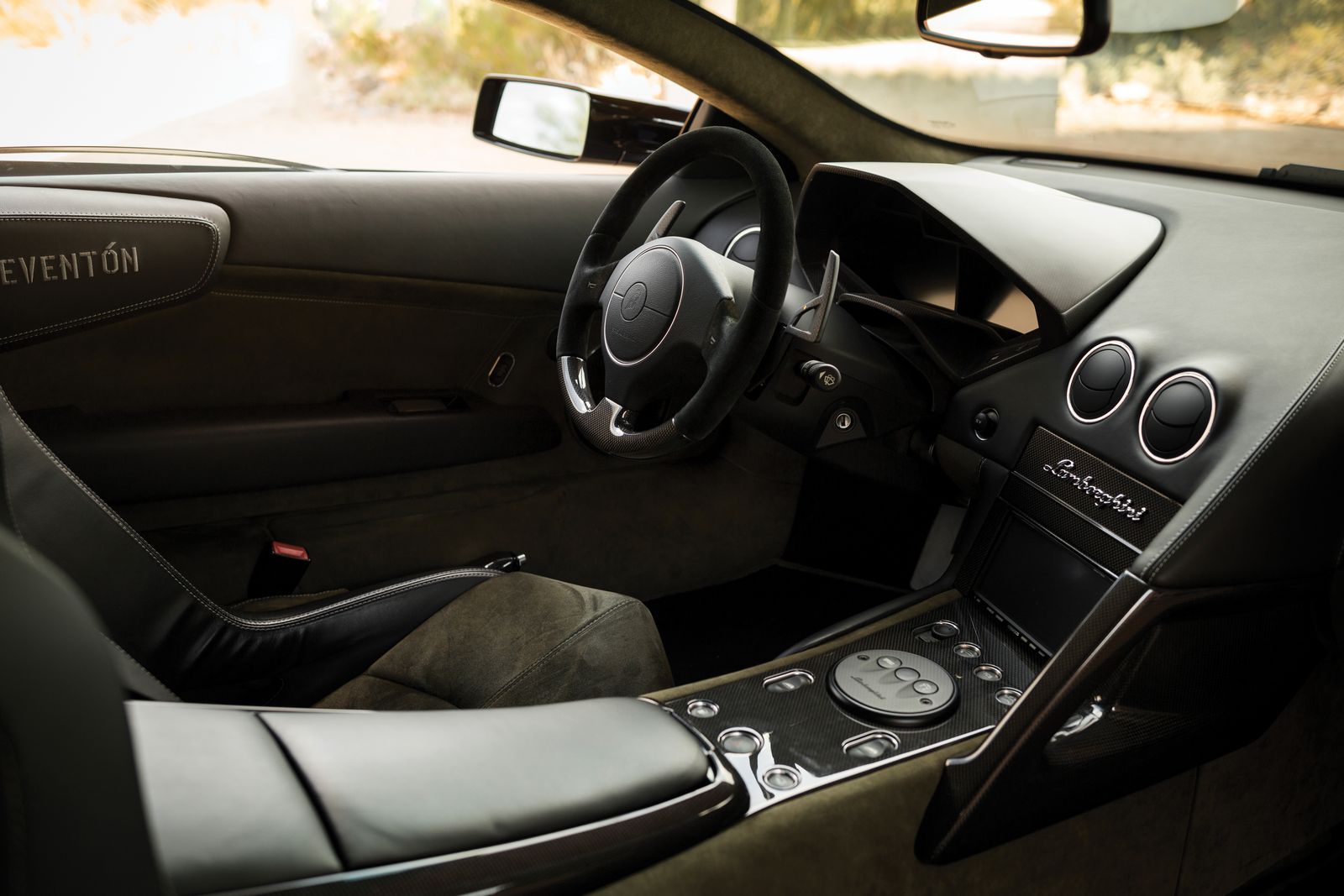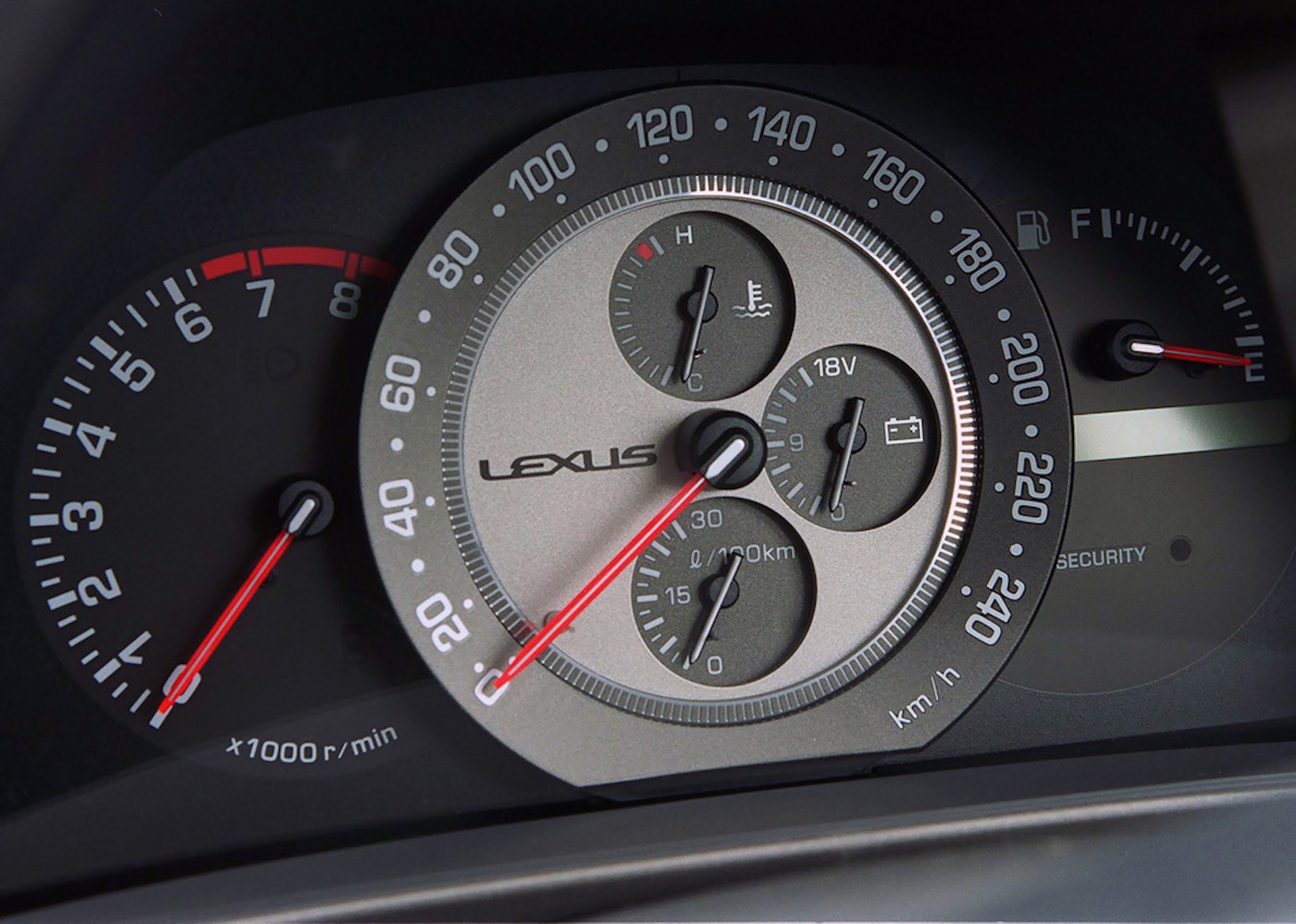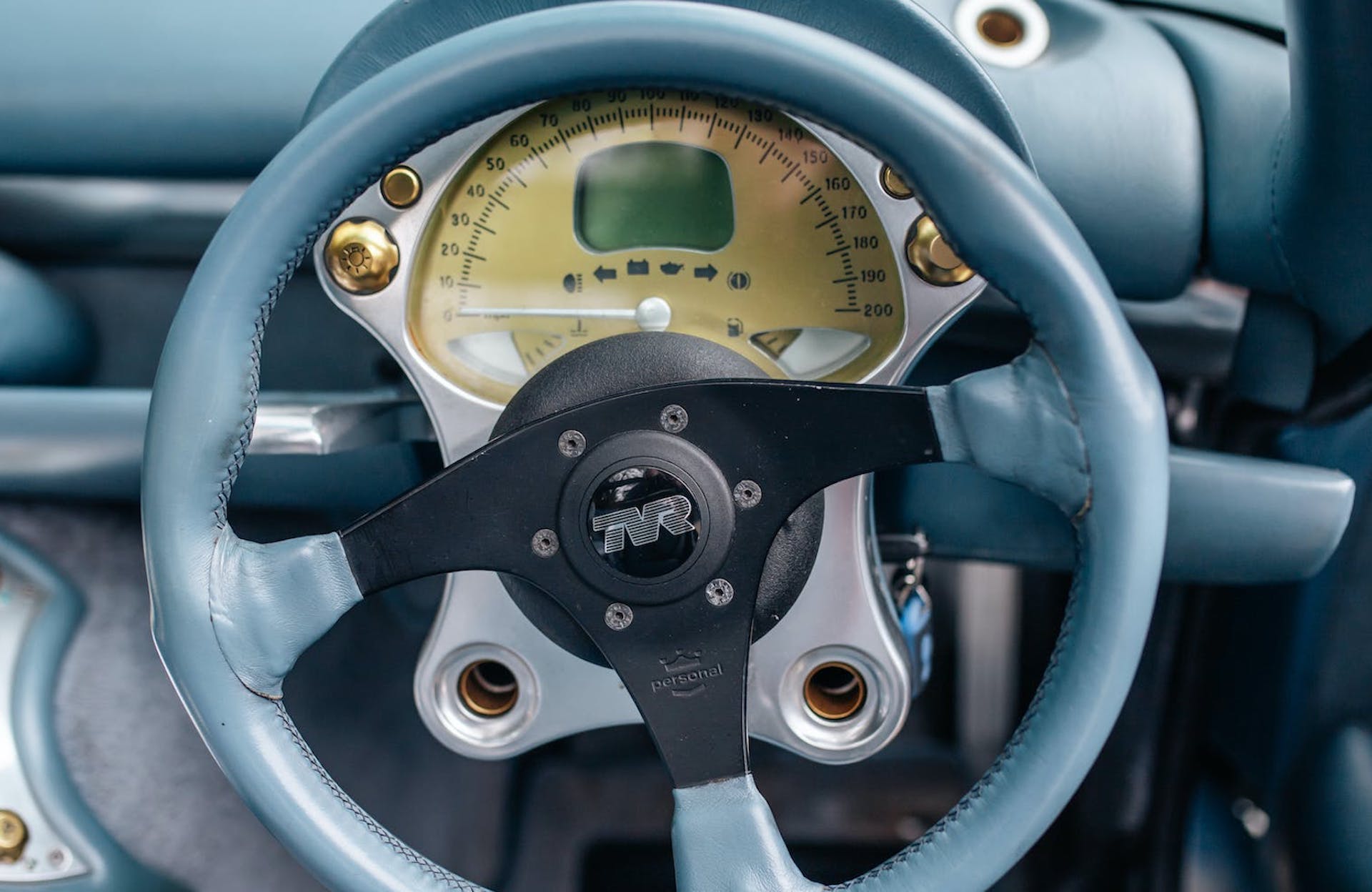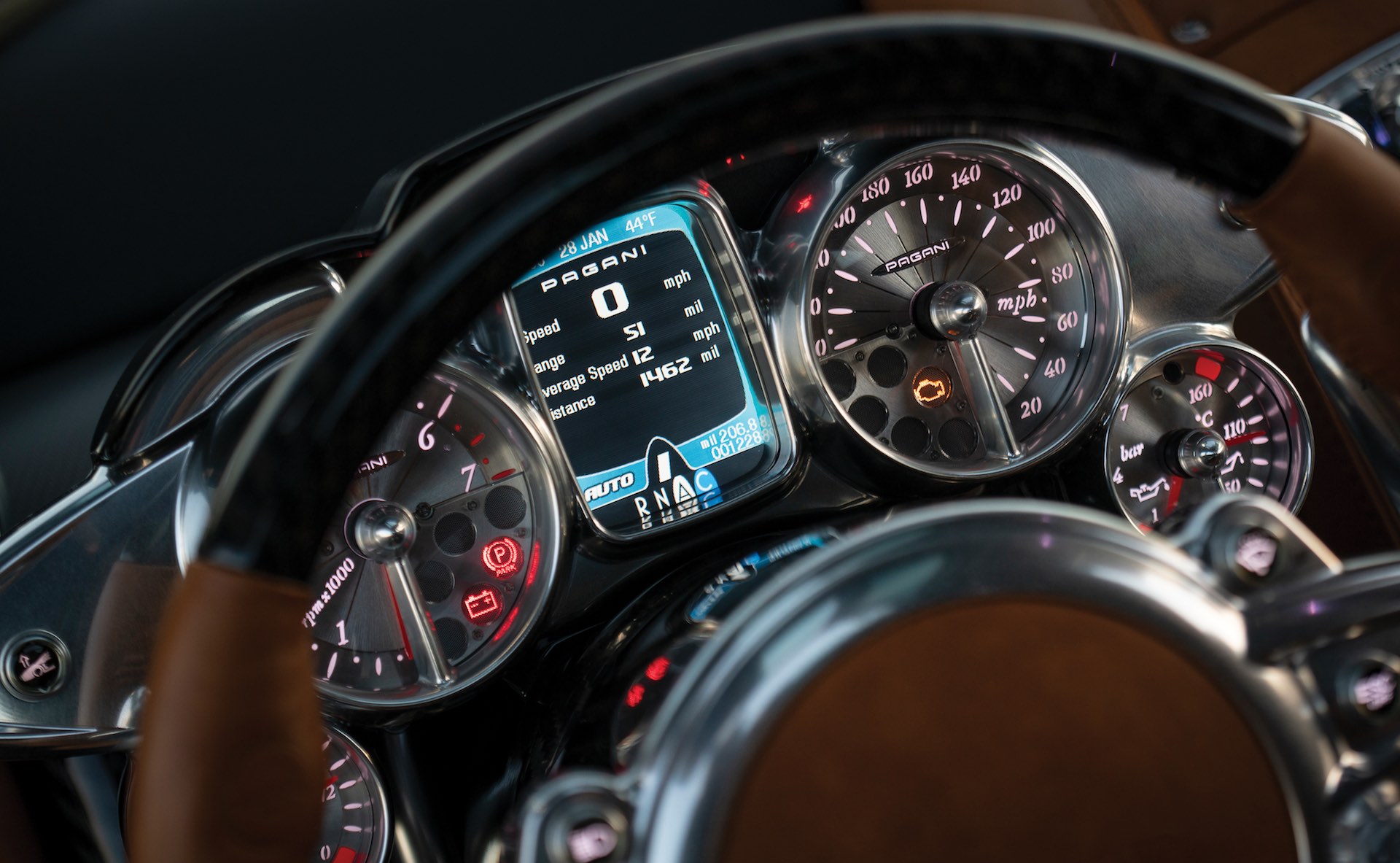A car’s instrument setup is as core to its character as a great engine. And you’ll spend far more timing looking at the gauge pack than those fancy wheels or that expensive carbon fiber exterior trim you optioned.
But what car has the best gauge cluster? Take a look at this list of 15 of our favorites, both old and new, then leave a comment and let us know yours.
Lexus LFA
From its carbon body to its V10 engine, Lexus crammed cutting edge technology into every bit of its LFA supercar, and that included the dashboard. We’ve driven an LFA and don’t buy the company’s claim that it had to go digital because an analogue rev counter couldn’t keep up with the V10, but it makes a nice story.
Alfa Romeo Montreal
Alfa’s 1960s and 1970s cars featured some fantastic hooded gauge packs that current cars like the Stelvio and Giulia riff on today.
But the wildest of those was on the V8 Montreal coupe, which managed to cram eight separate instruments into the driver’s field of view while still keeping the twin-dial binnacle shape.
Porsche 911
Porsche did a solid job of reinventing its traditional five-clock dash for the 996-generation 911, layering the dials to put more emphasis on the rev counter, and reducing the overall width, solving the problem of the peripheral gauges being obscured by the wheel rim. It also introduced the digital speed readout, which is just as well, because the analogue speedo’s scale and markings make it about as useful as a set of chocolate brake pads.
Lamborghini Reventon
The limited-run, carbon-bodied Reventon was a big deal back in 2007, but doesn’t look much more special than a regular Murciealgo today. Until you get behind the wheel, that is. The Reventon’s three TFT instrument displays were inspired by fighter jets and even included a g-meter to measure the accelerative force of the 641 hp V12.
BMW E46 M3
For over half a century, until the new digital instrument clusters arrived, BMW’s gauge packs were a masterclass in understated style and clarity.
The E46 M3’s is a particular favorite, combining soft orange backlighting, smart chrome rims, orange needles and a series of lights on the rev counter that extinguish as the engine warms, letting you know when it’s safe to jump on the gas.
Chevrolet Corvette C4
Digital dashboards were the must-have accessory for early 1980s performance cars, and we could have picked any from the Audi Quattro to the Nissan 300ZX, or even an early 2000s Honda S2000. But we’ll nominate the C4 Corvette’s dash because it’s one of the few that still looks relatively fresh today. It’s amusing to note that the odometer, located top right, is very much not digital.
Lexus IS
We’ve already featured the LFA supercar’s dashboard, but the original Lexus IS gauge pack is definitely worth a namecheck. Not, it didn’t do anything clever, but the style, which mimicked the face of a fancy chronograph watch, was a brilliant bit of creative thinking.
Fiat 500
Prefer stripped-down simplicity from your gauge setup? The early Fiat 500’s single clock was as cute as the exterior styling, and didn’t bother you with unnecessary information like, er, how much fuel was in the tank. All you got was a couple of warning lights and a speedo – and with just 18 hp under your right foot, you didn’t really need that either.
TVR Sagaris, Tuscan and Cerbera
Britain’s TVR created some of the wildest looking sports cars of the 1990s and 2000s, and its interiors were just as inventive as the exteriors and seemed to change from car to car as the designers latched on to some new idea.
The Cerbera featured a fairly conventional set of traditional-looking clocks visible through the top half of the steering wheel, but two additional gauges (plus an air vent) below it.
The Sagaris’s dials, meanwhile, which spun towards each other, like a contemporary Aston Martin’s, appeared to be hardly there at all, while the Tuscan’s (this picture) looked like something from a Jules Verne novel.
Pagani Huayra
Looking at the Pagani Huayra’s dashboard is like watching one of those nature documentaries about jellyfish that glow in the dark. We’re not sure how easy those clocks are to read when you’re unleashing all 720 hp, but they look great.
And you can’t talk about Pagani instruments and not mention the Zonda R, which actually had its rev counter built into the steering wheel center.
Citroen CX
Long before technology made digital dashboards feasible, carmakers were thinking of other ways to move away from boring old round gauges.
The early Citroen CX features a pair of revolving drums to show road- and engine speed, each covered by a weird magnified lens that makes it look like the dashboard is wearing Mr. Magoo glasses. Not the prettiest, but you can’t fault them for trying.
Audi Virtual Cockpit
Audi was the first company to deliver the full-width configurable TFT instrument clusters that revolutionized dashboard design, starting with the TT coupe in 2014. The ability to turn your whole dash panel into a digital map was something Jaguar’s earlier TFT display should have done, but didn’t. And even when used to display plain old engine revs, it does it more clearly than most analogue clocks.
McLaren 720S
Flick a modern McLaren’s drive mode dial round to ‘track’ and the rectangular LCD panel flips down, swapping the circular rev counter for a horizontal strip design and dispensing with the extraneous stuff you don’t need to worry about when you’re banging out hot laps.
Lancia Delta Integrale
The Lancia Delta Integrale’s six WRC wins mean its one of the greatest rally cars of all time, and it also happens to have one of the greatest analogue gauge packs.
Aston Martin Valkyrie
Aston’s choice of a naturally aspirated, non-hybrid V12 power unit for its $3 million (£2.2 million) Valkyrie might sound anachronistic, but there’s nothing old fashioned about its instrument pack, which is fitted right in the center of the Alcantara-wrapped pretzel that passes for a steering wheel.
What’s your favorite gauge pack? Leave us a comment and let us know.


























